Input interpretation

methyl methacrylate
Chemical names and formulas

formula | CH_2=C(CH_3)COOCH_3 Hill formula | C_5H_8O_2 name | methyl methacrylate IUPAC name | 2-methylprop-2-enoic acid methyl ester alternate names | 2-methylacrylic acid methyl ester | diakon | methacrylic acid methyl ester | methyl 2-methyl-2-propenoate | methyl 2-methylprop-2-enoate | pegalan mass fractions | C (carbon) 60% | H (hydrogen) 8.05% | O (oxygen) 32%
Lewis structure
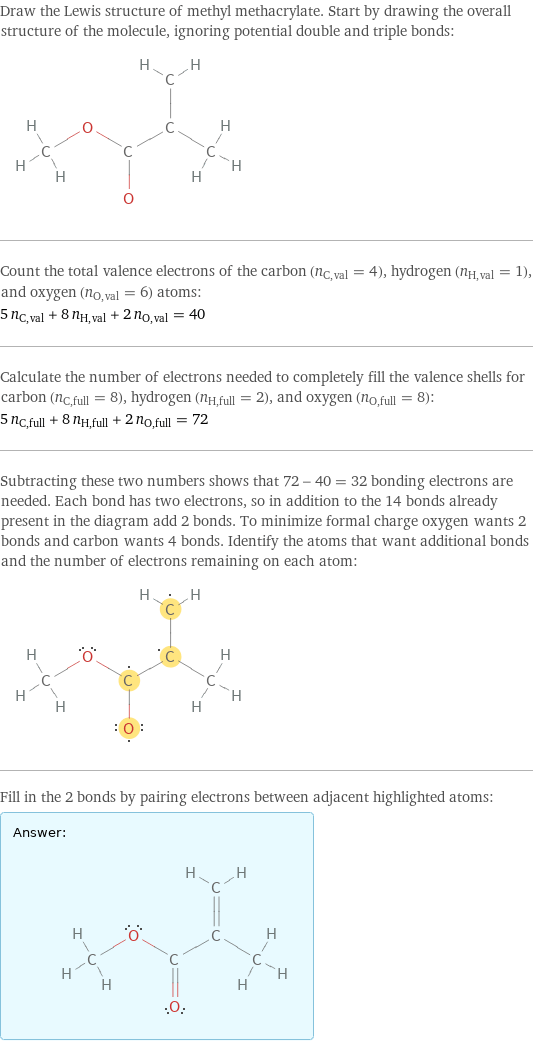
Draw the Lewis structure of methyl methacrylate. Start by drawing the overall structure of the molecule, ignoring potential double and triple bonds: Count the total valence electrons of the carbon (n_C, val = 4), hydrogen (n_H, val = 1), and oxygen (n_O, val = 6) atoms: 5 n_C, val + 8 n_H, val + 2 n_O, val = 40 Calculate the number of electrons needed to completely fill the valence shells for carbon (n_C, full = 8), hydrogen (n_H, full = 2), and oxygen (n_O, full = 8): 5 n_C, full + 8 n_H, full + 2 n_O, full = 72 Subtracting these two numbers shows that 72 - 40 = 32 bonding electrons are needed. Each bond has two electrons, so in addition to the 14 bonds already present in the diagram add 2 bonds. To minimize formal charge oxygen wants 2 bonds and carbon wants 4 bonds. Identify the atoms that want additional bonds and the number of electrons remaining on each atom: Fill in the 2 bonds by pairing electrons between adjacent highlighted atoms: Answer: | |
3D structure
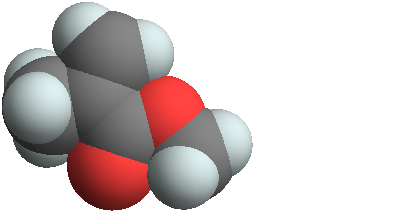
3D structure
Basic properties
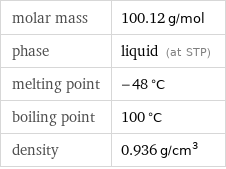
molar mass | 100.12 g/mol phase | liquid (at STP) melting point | -48 °C boiling point | 100 °C density | 0.936 g/cm^3
Units

Liquid properties (at STP)
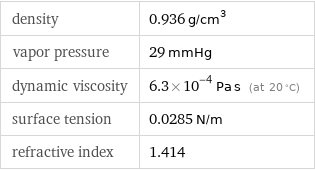
density | 0.936 g/cm^3 vapor pressure | 29 mmHg dynamic viscosity | 6.3×10^-4 Pa s (at 20 °C) surface tension | 0.0285 N/m refractive index | 1.414
Units

Thermodynamic properties
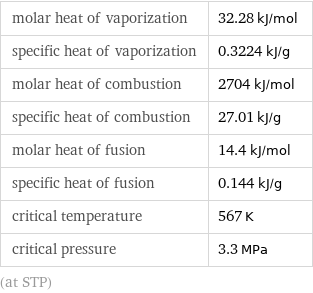
molar heat of vaporization | 32.28 kJ/mol specific heat of vaporization | 0.3224 kJ/g molar heat of combustion | 2704 kJ/mol specific heat of combustion | 27.01 kJ/g molar heat of fusion | 14.4 kJ/mol specific heat of fusion | 0.144 kJ/g critical temperature | 567 K critical pressure | 3.3 MPa (at STP)
Chemical identifiers
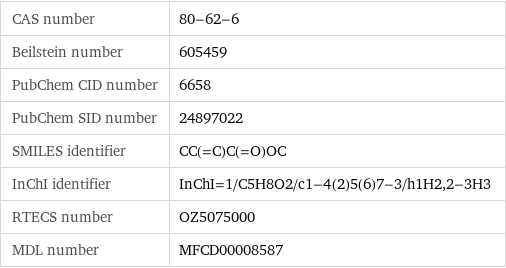
CAS number | 80-62-6 Beilstein number | 605459 PubChem CID number | 6658 PubChem SID number | 24897022 SMILES identifier | CC(=C)C(=O)OC InChI identifier | InChI=1/C5H8O2/c1-4(2)5(6)7-3/h1H2, 2-3H3 RTECS number | OZ5075000 MDL number | MFCD00008587
NFPA label

NFPA label
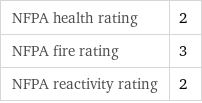
NFPA health rating | 2 NFPA fire rating | 3 NFPA reactivity rating | 2
Safety properties
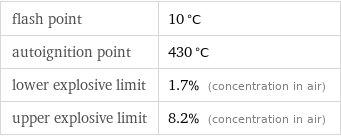
flash point | 10 °C autoignition point | 430 °C lower explosive limit | 1.7% (concentration in air) upper explosive limit | 8.2% (concentration in air)

DOT hazard class | 3 DOT numbers | 1247
Toxicity properties

lethal dosage | 7872 mg/kg (oral dose for rats) short-term exposure limit | 510 mg/m^3 threshold limit value | 50 ppmv

probable lethal dose for man | 1 L (liter) long-term exposure limit | 410 mg/m^3 (over 8 hours) RTECS classes | tumorigen | mutagen | reproductive effector | human data | primary irritant